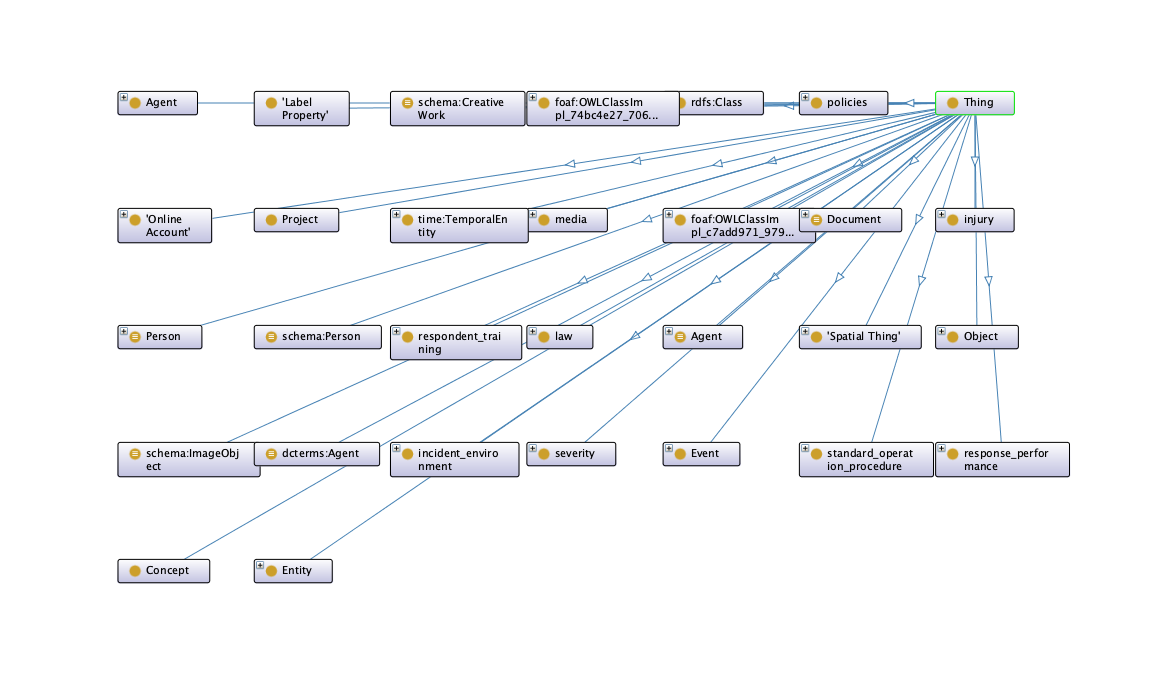The IRCO was developed as part of NCHRP 17-75 and is presented in NCHRP Research Report 904. 1 The development of IRCO was based on several existing ontologies, including the Vehicular Accident Ontology (VEACON). 2 VEACON does not include defined measures of incident response. To represent such response efforts, which often include multiple respondents performing various response actions within a particular timeframe, the Linking Open Descriptions of Events ontology (LODE) was referenced. By supplementing the traffic safety representations in VEACON with incident response representations built from concepts in LODE, the IRCO is able to effectively describe TIM and TIM performance measures in a complete, specific way. Specifically, it is the combination of incident information, incident response information, and geotemporal details regarding actions taken during incident response that makes IRCO well suited for use with TIM data. A small portion of the IRCO classes is visualized below so that the overall structure can be seen. The complete IRCO ontology, including all classes, object properties, and data properties, is provided in NCHRP Research Report 904.

Source: AEM Corporation
Referencing Page:
- 1Pecheux, K., Pecheux, B., & Carrick, G. (2019). Research Report 904 Leveraging Big Data to Improve Traffic Incident Management. Washington, DC: National Academy of Sciences. Retrieved June 4, 2020, from http://www.trb.org/Main/Blurbs/179756.aspx
- 2Barrachina, J., Garrido, P., Fogue, M., Martinez, F. J., Cano, J.-C., Calafate, C. T., & Manzoni, P. (2012, November). VEACON: a Vehicular Accident Ontology Designed to Improve Safety on the Roads. Journal of Network and Computer Applications, 35. Retrieved July 8, 2020, from https://www.researchgate.net/publication/230799214_VEACON_a_Vehicular_Accident_Ontology_Designed_to_Improve_Safety_on_the_Roads
- Log in to post comments
